Katie Salen Tekinbas - Rules of Play: Game Design Fundamentals
Here you can read online Katie Salen Tekinbas - Rules of Play: Game Design Fundamentals full text of the book (entire story) in english for free. Download pdf and epub, get meaning, cover and reviews about this ebook. year: 2003, publisher: MIT Press, genre: Romance novel. Description of the work, (preface) as well as reviews are available. Best literature library LitArk.com created for fans of good reading and offers a wide selection of genres:
Romance novel
Science fiction
Adventure
Detective
Science
History
Home and family
Prose
Art
Politics
Computer
Non-fiction
Religion
Business
Children
Humor
Choose a favorite category and find really read worthwhile books. Enjoy immersion in the world of imagination, feel the emotions of the characters or learn something new for yourself, make an fascinating discovery.
- Book:Rules of Play: Game Design Fundamentals
- Author:
- Publisher:MIT Press
- Genre:
- Year:2003
- Rating:5 / 5
- Favourites:Add to favourites
- Your mark:
- 100
- 1
- 2
- 3
- 4
- 5
Rules of Play: Game Design Fundamentals: summary, description and annotation
We offer to read an annotation, description, summary or preface (depends on what the author of the book "Rules of Play: Game Design Fundamentals" wrote himself). If you haven't found the necessary information about the book — write in the comments, we will try to find it.
Rules of Play: Game Design Fundamentals — read online for free the complete book (whole text) full work
Below is the text of the book, divided by pages. System saving the place of the last page read, allows you to conveniently read the book "Rules of Play: Game Design Fundamentals" online for free, without having to search again every time where you left off. Put a bookmark, and you can go to the page where you finished reading at any time.
Font size:
Interval:
Bookmark:
Katie Salen and Eric Zimmerman
The MIT Press
Cambridge, Massachusetts
London, England
2004 Massachusetts Institute of Technology
All rights reserved. No part of this book may be reproduced in any form by any electronic or mechanical means (including photocopying, recording, or information storage and retrieval) without permission in writing from the publisher.
This book was set in 8.8-point Myriad by Katie Salen and was printed and bound in the United States of America.
Library of Congress Cataloging-in-Publication Data
Salen, Katie.
Rules of play : game design fundamentals / Katie Salen and Eric Zimmerman.
p. cm.
Includes bibliographical references and index.
ISBN-13: 978-0-262-24045-1 (hc : alk. paper)
ISBN-10: 0-262-24045-9 (hc : alk. paper)
ISBN-13: 978-0-262-29993-0 (e-book)
1. Computer gamesDesign. 2. Computer gamesProgramming. I. Zimmerman, Eric. II. Title.
QA76.76.C672S25 2003
794.81526dc21
2003045923
10 9 8 7 6 5
To those for whom the game is made.
Mr. Triggs, Tom Ockerse, H.F., and Dad; Enid, Gil, Laura, and Zach
In gratefulness and love.
Thank you to the many individuals who gave their time, expertise, support, friendship, and ideas; to the game designers and developers who created the incredible body of work we examined in the course of our study, including Reiner Knizia, James Ernest, Kira Synder, Frank Lantz, and Richard Garfield, who all contributed original work to this volume; to our fearless readers John Sharp, Frank Lantz, Henk van Assen, Ranjit Bhatnagar, Nancy Nowacek, Mark Owens, Peter Lee, and Julian Kcklich; to our own teachers and students who helped inspired clarity and invention; to Doug Sery and the rest of MIT Press; and most of all to our families and friends, who waited patiently for us to join them back in the real world. We could not have done it without you.
Frank Lantz
For hundreds of years, the field of game design has drifted along under the radar of culture, producing timeless masterpieces and masterful time-wasters without drawing much attention to itselfwithout, in fact, behaving like a field at all. Suddenly, powered by the big bang of computer technology, game design has become a very big deal and the source of some provocative questions about the future of art and entertainment.
In addressing these questions, the book you are holding raises quite a few of its own. On its surface Rules of Play appears to be calm and reasonable, carefully laying out a broad theoretical framework for understanding the field of game design. But beneath this calm surface, the book actually stakes out a controversial position in a dramatic, ongoing discussion about what games are and what they could become.
In fact, from certain angles this book appears to have the burning impatience of a manifesto. What is the nature of this impatience? To some extent it is the frustration of workers who are asked to build a cathedral using only a toothbrush and a staplegun. Games are remarkably complex, both in their internal structure and in the various kinds of player experiences they create. But there exists no integrated set of conceptual tools for thinking about games. Until recently, if you were a game designer interested in the theoretical underpinnings of your field, you would be forced to stitch together a set of perspectives from sociology, anthropology, psychology, and mathematics, each of which brought its blindmans view of the elephant, and none of which considered games as a creative domain.
More recently, within the field itself there has emerged a Babel of competing methodologies. Most of these have a practical focus on the nuts-and-bolts questions of the creative process of game design; few of them have attempted to ground their insights in a general theoretical system. But the impatience that gives this book its undercurrent of urgency is more than a response to the fields underdeveloped level of discourse. Why, after all, does game design need a theoretical framework? There is something more than insight, knowledge, and understanding at stake here.
Remember that the authors of this book are not just academics looking at games from the outside; they are themselves active practitioners. Like many people working in this field, they are driven by the feeling that despite the breathtaking pace of recent technical and commercial advancement, games have remained creatively stunted. On the one hand, there is a sense of boundless potential, the much-discussed possibility that games could succeed film as the defining form of popular culture for the new century. On the other hand, there is the reality of the game storeendless racks of adolescent power fantasies, witless cartoon characters, and literal-minded sports simulations.
To get a feeling for the sense of potential that fuels this impatience, consider the vast kinds of experiences games can producecomplex networks of desire and pleasure, anxiety and release, wonder and knowledge. Games can inspire the loftiest form of cerebral cognition and engage the most primal physical response, often simultaneously. Games can be pure formal abstractions or wield the richest possible representational techniques. Games are capable of addressing the most profound themes of human existence in a manner unlike any other form of communicationopen-ended, procedural, collaborative; they can be infinitely detailed, richly rendered, and yet always responsive to the choices and actions of the player.
But where are the games that explore these diverse possibilities? Instead of the rich spectrum of pleasures games are capable of providing, we seem cursed to suffer an embarrassment of variations on the all-too familiar pleasures of running and jumping, of Hide and Go Seek and Tag, of Easter egg hunts and Cops and Robbers. And what happened to the explosion of formal experimentation during the early days of computer games? For a while it seemed that every other title was a fresh attempt to answer the question What can you do with a computer? Compare that with the current crop of computer games, the majority of which seem to be addressing the question What can you do while controlling an avatar that is moving through a simulated three-dimensional space?
This, then, is what is at stake: a vast discrepancy between the radical possibilities contained in the medium and the conservative reality of mainstream game development. And this is the way in which Rules of Play is more than a conceptual analysis of what games do; it is also an examination of what they can do, and by extension what they should do.
One of the implications of Rules of Plays approach to its subject is that the proper way to understand games is from an aesthetic perspective, in the same way that we address fields such as architecture, literature, or film. This should not be confused with the domain of visual aesthetics, which is simply one facet of a games creative content. Like film, which uses dramatic storytelling, visual composition, sound design, and the complex dynamic organizational process of editing in the construction of a single work, the field of game design has its own unique aesthetic.
As laid out in the following pages, the real domain of game design is the aesthetics of interactive systems. Even before computers existed, creating games meant designing dynamic systems for players to inhabit. Every game, from Rock-Paper-Scissors to The Sims and beyond is a space of possibility that the players explore. Defining this space is the collaborative work of the game design process.
Font size:
Interval:
Bookmark:
Similar books «Rules of Play: Game Design Fundamentals»
Look at similar books to Rules of Play: Game Design Fundamentals. We have selected literature similar in name and meaning in the hope of providing readers with more options to find new, interesting, not yet read works.
Discussion, reviews of the book Rules of Play: Game Design Fundamentals and just readers' own opinions. Leave your comments, write what you think about the work, its meaning or the main characters. Specify what exactly you liked and what you didn't like, and why you think so.

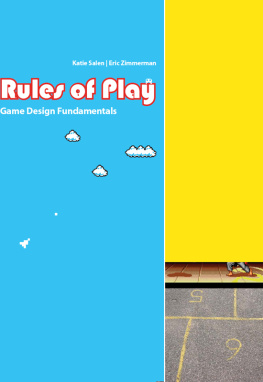

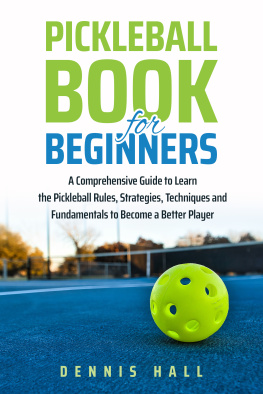



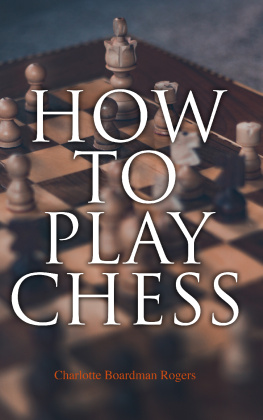
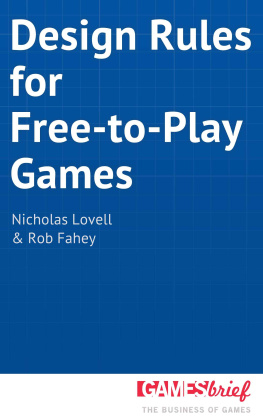

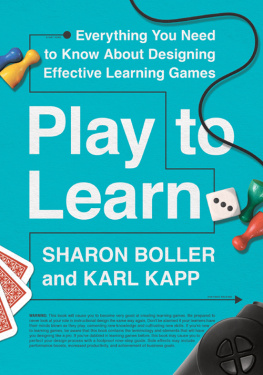

![Briar Lee Mitchell [Briar Lee Mitchell] - Game Design Essentials](/uploads/posts/book/119420/thumbs/briar-lee-mitchell-briar-lee-mitchell-game.jpg)